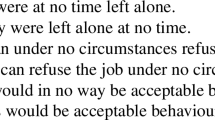Abstract
It is suggested that despite appearances, negation mou5 in clauses in Guangdong Yue is derived phonologically from the sequence mou4 and jau5 by a two-step process of deletion of segmental phonology and tone association that exist independently. The syntactic presence of the verb jau5 is observable in six areas of syntax including aspectual restrictions, null objects, object fronting, VP-ellipsis, VP-fronting, and A-not-A questions. The co-occurrence of mou4 and jau5 in two nineteenth century texts as well as in Guangxi Yue provides diachronic and dialectal support for the analysis. The account suggested here brings the phonological and syntactic properties observed elsewhere to bear on the phonological and syntactic properties of mou5. It thus explains in a principled way why the facts are the way they are but not otherwise. The phonological analysis of negation mou5 is theoretically significant insofar as it adds an additional piece of empirical evidence for autosegmental phonology separating tone and segmental phonology.
Similar content being viewed by others
References
Bai, Wanru. 1989. Guangzhou hua zhong de shengluexing bianyin [Tone change triggered by ellipsis in Cantonese]. Fangyan 2: 114–120.
Bao, Zhiming. 1999. The structure of tone. Oxford/New York: Oxford University Press.
Chao, Wynn, and Evelynne Ki-Mei Mui. 1999. The forms of negation in Cantonese. In Proceedings of the 10th North American Conference on Chinese Linguistics, ed. Chaofen Sun, 98–115. GSIL: University of Southern California.
Chen, Matthew. 2000. Tone sandhi. Cambridge: Cambridge University Press.
Cheng, Ying, and Feng-fu Tsao. 1995. Minnanyu ‘ka’ yongfa zhi jian de guanxi [The relations between the uses of ‘ka’ in southern Min]. In Taiwan minnanyu lunwenji [Essays on Taiwanese southern Min], ed. Feng-fu Tsao and Mei-hui Tsai, 23–46. Taipei: Crane Publishing Co.
Chomsky, Noam. 1981. Lectures on government and binding. Dordrecht: Foris.
Chomsky, Noam. 1995. The Minimalist program. Cambridge, MA: MIT Press.
Chomsky, Noam. 1973. Conditions on transformations. In A Festschrift for Morris Halle, ed. Stephen Anderson and Paul Kiparsky, 232–286. New York: Holt, Rinehart & Winston.
Fiengo, Robert. 1974. Semantic conditions on surface syntax. Ph.D. dissertation, MIT.
Goldsmith, John. 1976. Autosegmental phonology. Ph.D. dissertation, MIT.
Huang, C.-T.James. 1984. On the distribution and reference of empty pronouns. Linguistic Inquiry 15: 531–574.
Huang, C.-T.James. 1990. On ‘be’ and ‘have’ in Chinese [shuo shi he you]. Bulletin of the Institute of History and Philology, Academia Sinica 59: 43–64.
Laka, Itzia. 1990. Negation in syntax: On the nature of functional categories and projections. Ph.D. dissertation, MIT.
Law, Ann. 2001. A-not-A questions in Cantonese. UCL Working Papers in Linguistics 13: 295–318.
Law, Hoi Ki Jess. 2010. The syntax of Cantonese negative markers m4 and mou5. ms., Chinese University of Hong Kong.
Leben, William. 1973. Suprasegmental phonology. Ph.D. dissertation, MIT.
Lin, Yi, and Tan Feng Yu. 2008. Guangxi nanning baihua yanjiu [Research on Guangxi Nanning vernacular language]. Guilin: Guangxi Normal University Press.
Lobeck, Anne. 1995. Ellipsis: Functional heads, licensing and identification. Oxford: Oxford University Press.
Mai, Shizhi. 1893a. Guangzhou shuhua shujing jieyi [The interpretation of the Book of Documents in the Guangzhou vernacular language], Yangcheng shiba buwen baoge.
Mai, Shizhi. 1893b. Guangzhou shuhua shijing jieyi [The interpretation of the Book of Odes in the Guangzhou vernacular language], Yangcheng shiba buwen baoge.
Matthews, Stephen, and Virginia Yip. 1994. Cantonese comprehensive grammar. London: Routledge.
Ohta, Matsuo. 1987. Zhongguoyu lishi wenfa [An historical grammar of Chinese]. Translated by Jiang Shaoyu and Xu Changhua. Peking: Peking University Press.
Pan Wuyun. 2001. Wenzhou fangyan de foudingci [Negation in Wenzhou dialect]. Paper presented at the Comparative research on Chinese southeastern dialects conference, Shanghai Normal University.
Selkirk, Elizabeth. 1972. Phrase phonology in English and French. Ph.D. dissertation, MIT.
Shi, Qisheng. 1996. Lun youzi ju [About you-sentences]. Yuyanyanjiu 30: 26–31.
Tsao, Feng-fu. 2005. Taiwan Minnanyu de ka7 yu binyu de qianzhi [Taiwanese southern Min ka7 and object preposing]. Hanyu xuebao 9: 21–30.
Tsao, Feng-fu. 2003. Taiwan Minnanyu de ka7 ziju [ka7 sentences in Taiwanese southern Min]. In Hanyu fangyan yufa yanjiu he tansuo [Research and explorations in the grammar of Chinese dialects], ed. Zhaoming Dai and Lei Zhou, 114–136. Harbin: Heilongjiang renmin chubanshe.
Ushijima, Tokuji. 1967a. Kango bunpo ron. vol.1. Tokyo: Taishukan Shoten.
Ushijima, Tokuji. 1967b. Kango bunpo ron. vol.2. Tokyo: Taishukan Shoten.
Wasow, Thomas. 1972. Anaphoric relations in English. Ph.D. dissertation, MIT.
Xu, Liejong. 1986. Free empty category. Linguistic Inquiry 17: 75–94.
Yau, Shun Chiu. 1973. Le système de la négation en Cantonais [The system of negation in Cantonese]. Ph.D. dissertation, Université de Paris VII.
Yip, Moira. 1990. The tonal phonology of Chinese. New York/London: Garland Publishing, Inc.
Yip, Moira. 1988. Negation in Cantonese as a lexical rule. Bulletin of the Institute of History and Philology, Vol. LIX, Part II: 449–477. Taipei, Taiwan: Academia Sinica.
Yue, Anne O. 2011. Study of grammar in temporal and spatial perspectives: You 3 in the OBI, ancient documents and the dialects. Bulletin of Chinese Linguistics 4: 1–80.
Yue, Aiqin. 2001. Yueyu de foudingci: Yige lishi de gaocha (dongnan fangyan bijiao yanjiu jihua) [Negation in Chinese: A historical investigation (Research project on comparative southeastern dialects]. Paper presented at the Comparative research on Chinese southeastern dialects conference, Shanghai Normal University.
Yue-Hashimoto, Anne O. 1972. Phonology of Cantonese. Cambridge: Cambridge University Press.
Zhang Min. 2002. Shanggu, zhonggu hanyu ji xiandai nanfang fangyan li de ‘fouding-cunzai yanhua quan [The negative existential cycle as manifested in archaic Chinese, middle Chinese and the modern southern dialects]. Commemorating the centennial birthday of the late professor Li Fang Kuei (1902–1987), Volume II: 571–616. Seattle: University of Washington.
Author information
Authors and Affiliations
Corresponding author
Rights and permissions
About this article
Cite this article
Law, P. The negation mou5 in Guangdong Yue. J East Asian Linguist 23, 267–305 (2014). https://doi.org/10.1007/s10831-013-9116-0
Received:
Accepted:
Published:
Issue Date:
DOI: https://doi.org/10.1007/s10831-013-9116-0




